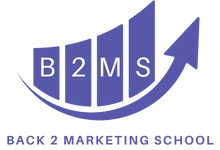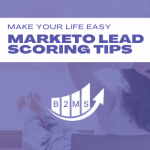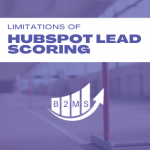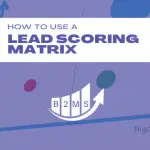8 tips for successful lead qualification
Not every lead is a good lead. Period. At the same time, even a lead that is good on paper may not be ready for the next steps in the sales cycle. Lead qualification is the be-all and end-all of today’s lead management.
Although a human factor should not be excluded, marketing automation and defined marketing processes can systematically build, scale and optimize a lead qualification process.
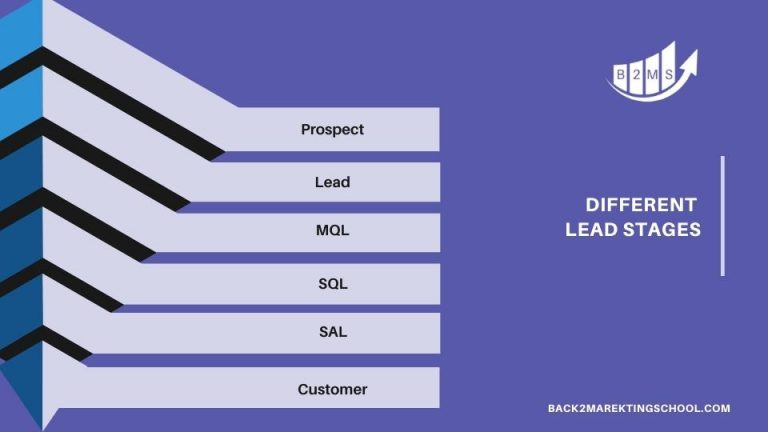
Different lead stages
A lead passes through different lead stages or phases in the buyer’s journey. These are not always defined in the same way. It is a model that needs to be tailored and continuously improved for your Sales Cycle.
- Prospect: A prospect is a potential customer defined as ideal by sales or marketing. However, a prospect is not yet a lead. It only becomes one when it shows initial intentions to buy.
- Lead: A lead is a contact who shows initial intentions to buy. This can be, for example, a positive response from a prospect to an outbound marketing message, or the conversion of an inbound lead through a contact request.
- Marketing Qualified Lead (MQL): A lead reaches the next stage when it is considered qualified according to predefined criteria. This does not yet mean that the lead is ready to sign a contract, but simply that it should be processed further. The MQL phase is used to prioritize leads.
- Sales Qualified Lead (SQL): A lead reaches the sales qualified level when it has met the minimum sales requirements. Now the sales process can begin and the MQL should be passed to the sales team.
- Sales Accepted Lead (SAL): A SAL is a SQL that has been accepted by sales. The sales process is initiated.
- Customer: A lead becomes a customer when a sale is made.
Goal of lead qualification
The goal of lead qualification is to ensure successful collaboration between Sales and Marketing. It also ensures that only qualified leads are processed, thus the optimal allocation of resources, shortening the sales cycle, and increasing the closing rate.
8 Tips for Lead Qualification
How do I optimally qualify my leads and increase the efficiency of my marketing? The following tips work for any company regardless of the size or complexity of the sales cycle. Tools like marketing automation help of course, but they are only tools that can also be implemented manually – at least in the basic concept.
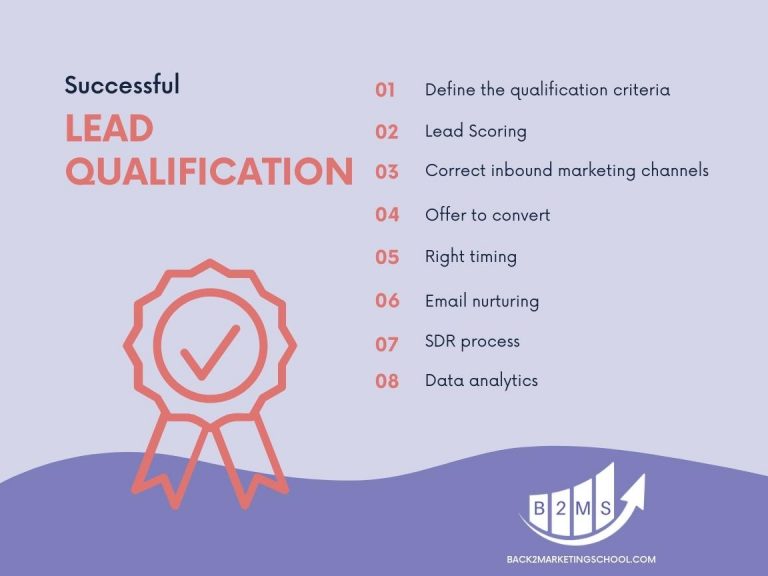
1. Define the qualification criteria
What distinguishes a qualified lead from an unqualified one? Define what this means for you. Write down the criteria using already available data from previous customers and non-customers. Consider customer segmentation based on firmographic (in B2B marketing), geographic and demographic data, as well as behaviors such as virtual webinar attendance.
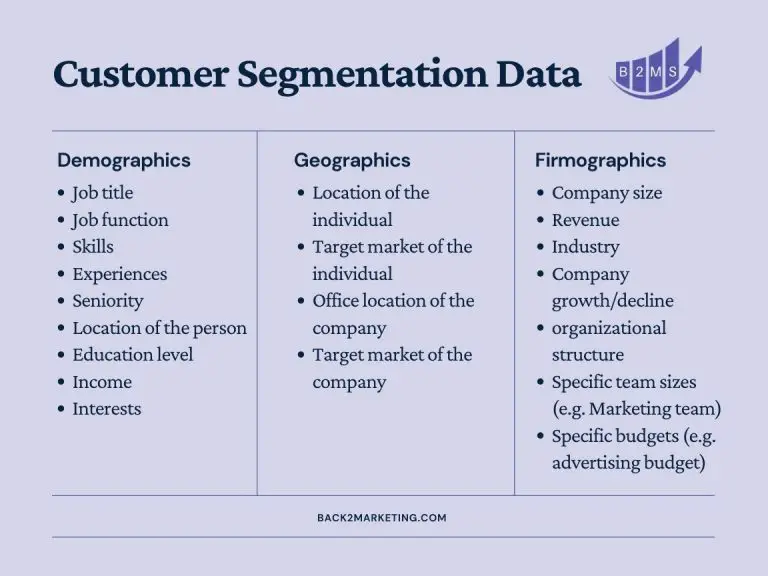
2. Lead scoring
A lead score is a value that quantifies the quality of the lead based on the information provided and the behavior. Thus, models can be formed to represent the different lead stages. Based on lead scores, a lead can reach MQL or SQL status.
Of course, marketing automation software like Marketo or HubSpot’s Lead Scoring help with the implementation, but simplified criteria can also be analyzed manually. It leads back to the first tip of qualifying criteria.
3. Use the correct inbound channels
Lead qualification is also directly dependent on lead generation. For example, leads generated via social media inbound marketing may convert better or worse than organic website visitors. In addition, cost per lead (CPL) and cost per acquisition (CPA) should be considered. For this, it is also important to perform proper advertising budget planning that takes into account the value of a contact per lead gen channel.
4. Offer to convert
Not every lead is immediately ready to buy and interested in learning more about the product or solution – especially if this means a demo or sales presentation. There should therefore be the right content offers for each potential customer at each stage of the sales funnel. Lead magnets can play a significant role in this, but so can the offer of a newsletter sign-up.
It should also be taken into account that it can often be better to make the content freely available (un-gated).
5. Right timing
The right time is crucial when it comes to lead qualification. A potential ideal customer can be deterred if she is qualified too early and receives sales promotion messages. On the other hand, a customer who is ready to buy can be “missed” if they are provided with the wrong information.
Measuring and capturing behavioral data is the basis for personalized control. Tracking pixels make it possible to analyze behavior very precisely and at the same time trigger the next steps. An example is viewing case studies or even a pricing page. These pages with high buying intent signal the lead’s readiness to buy and require timely marketing messages.
A change in the deal stage is also a good example of content customization. If a SAL is already in contract negotiation, provide 10 tips on the product instead of 10 tips on how to get into the industry.
6. Email nurturing
Unfortunately, as a marketing consultant, I see it far too often. Leads are generated without a follow-up process. Not every lead is ready to buy and thus should receive automated email nurture streams. It’s important to emphasize the plural: Nurture Streams!
New leads may require more high-level informative content, while MQLs should have solution-oriented content delivered.
Connect the right Nurture Stream to the right Lead Score, Lead Stage, and Timing.
7. SDR Process
Not everything needs to be automated – quite the opposite. Certain processes should be handled by staff. SQLs, for example, should be qualified and processed by Marketing SDRs.
8. Data analytics
Lead qualification is a continuous process. As you can see from the previous tips, lead scores, CPLs, inbound channels, and handover of leads to sales depend heavily on the defined data sets. These need to be constantly analyzed and adjusted.
Every small optimization within a sales funnel of a 0.5% conversion rate improvement between MQL to SAL conversions, can have a big impact on the sales pipeline and ultimately the company’s bottom line.

Sascha is a Lifecycle Marketing Consultant with over 8 years of digital marketing experiences in Silicon Valley, the UK, and Germany.
After leading the demand generation for a 100+ million company, he decided to venture out on himself. He’s now helping clients to attract and convert more leads and customers.
His main focus are SEO, paid media & marketing automation – all with the focus to tie marketing campaigns to revenue.
Sascha has been featured in industry publications.
